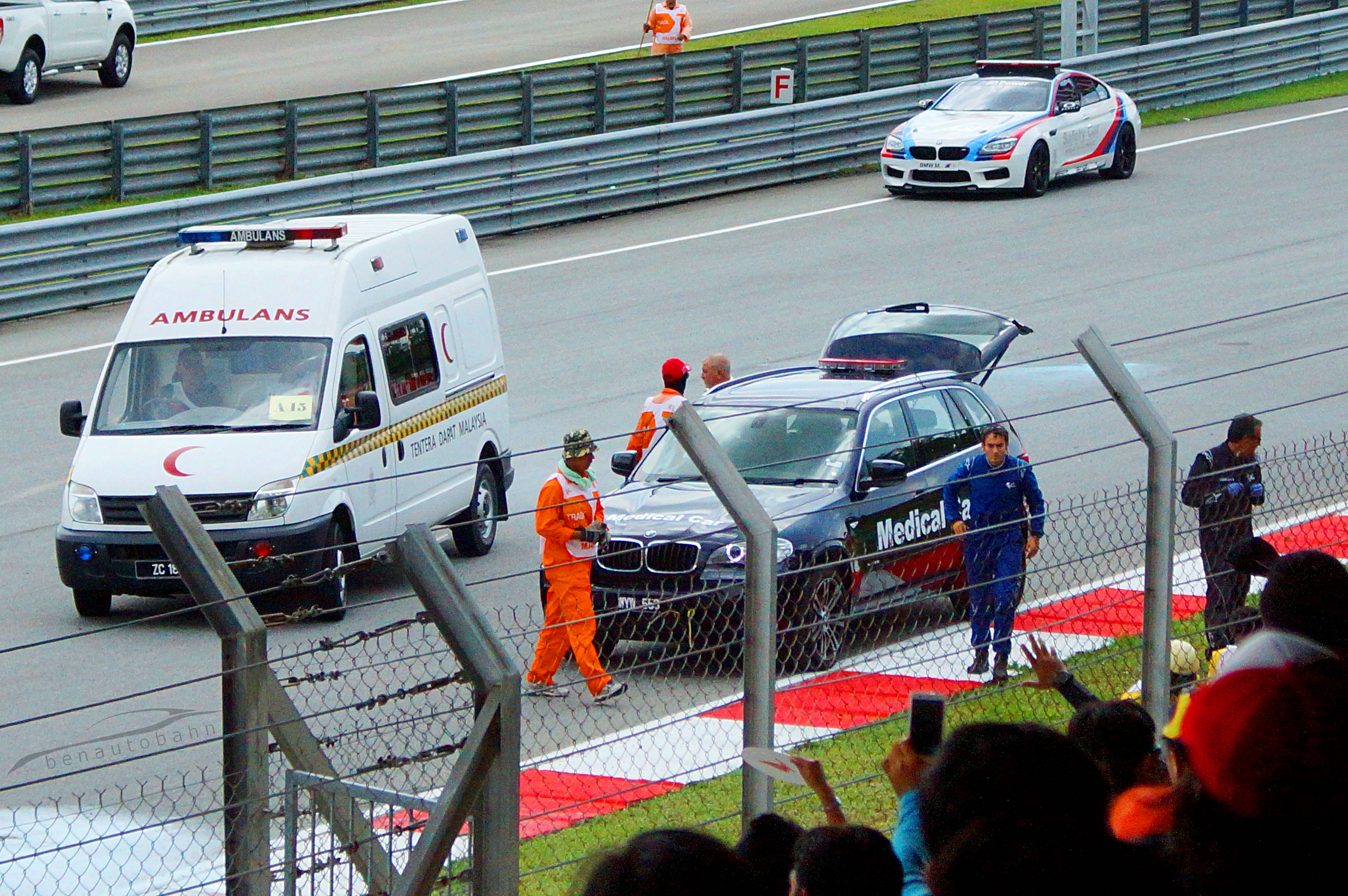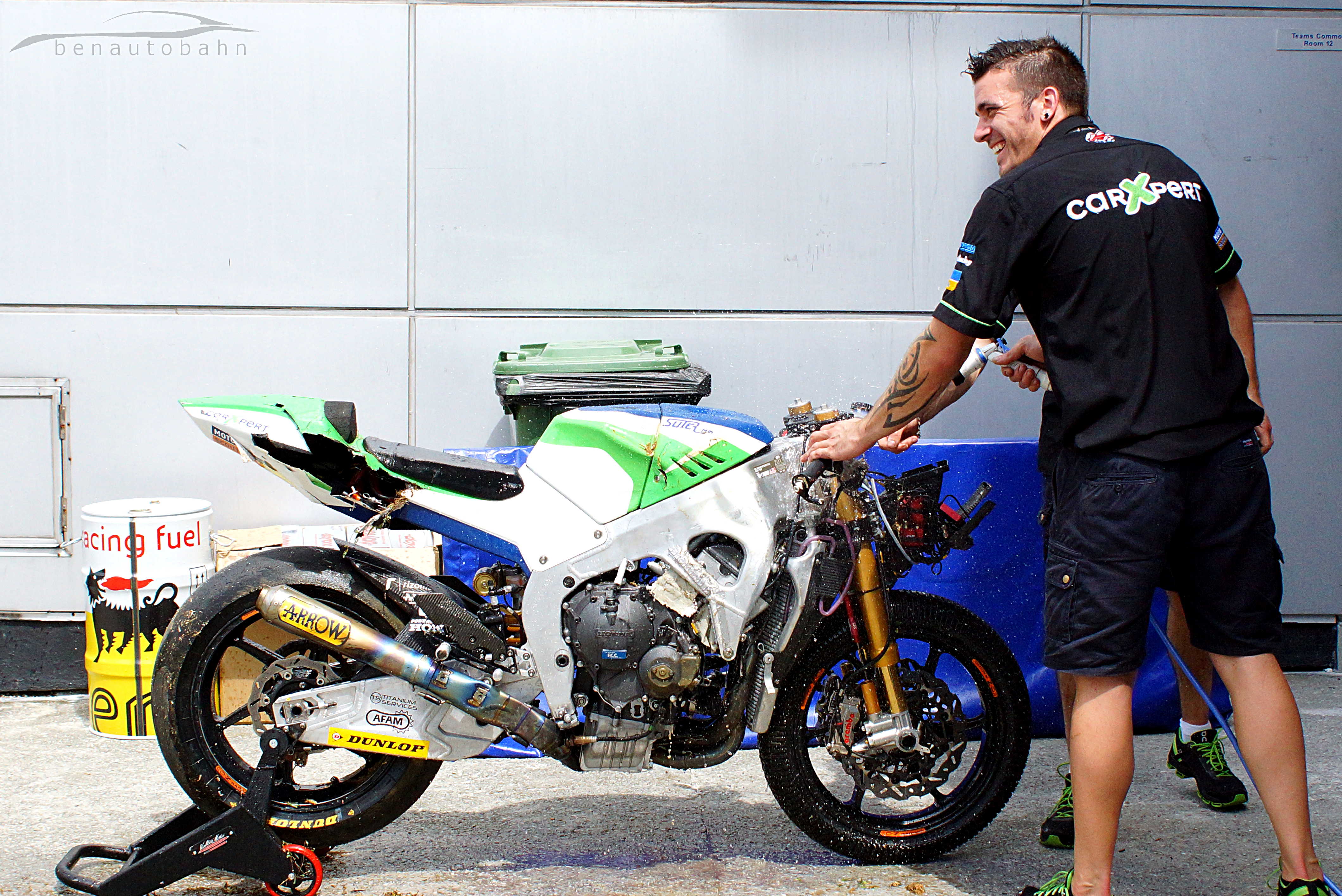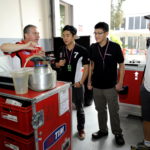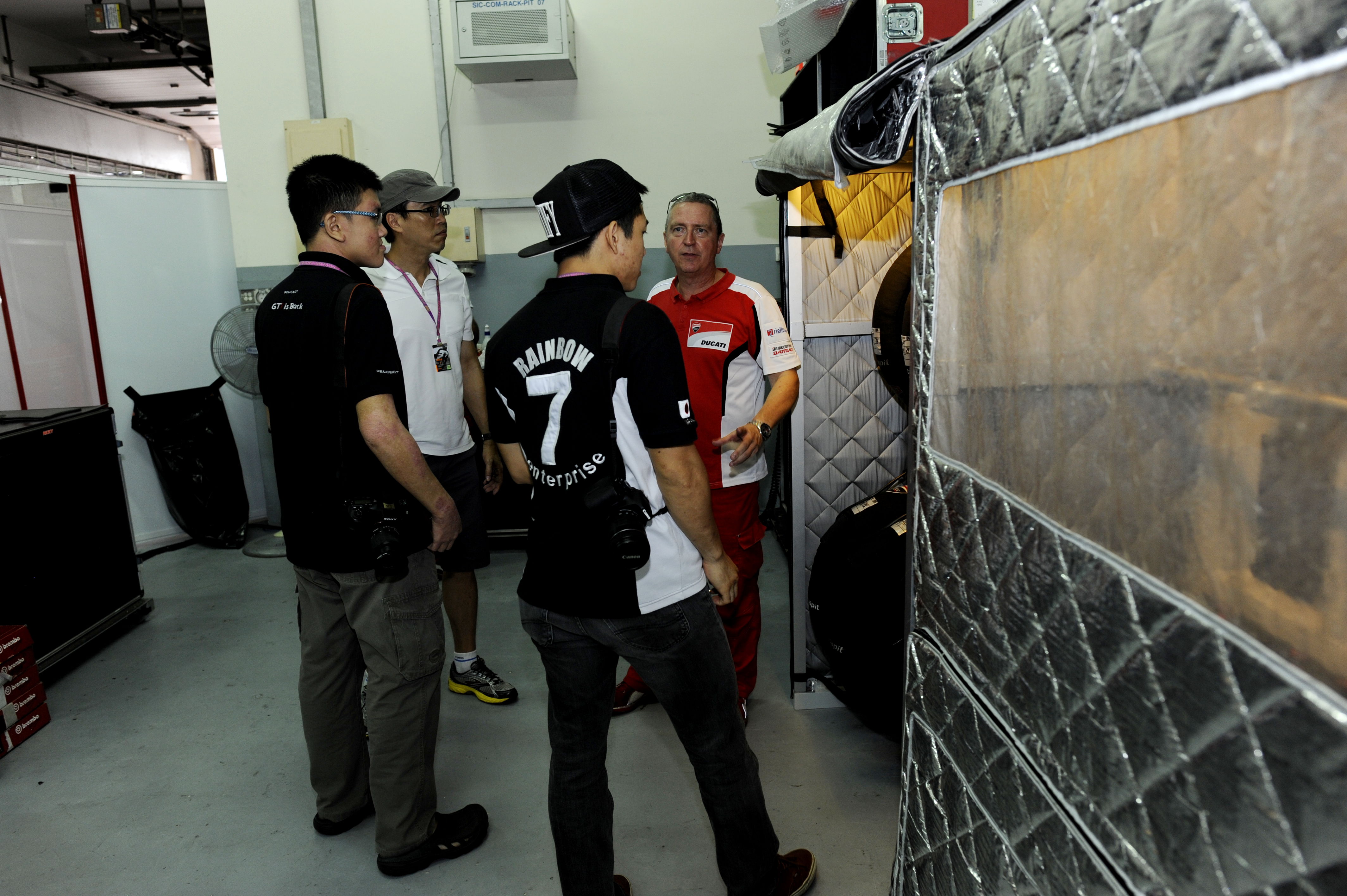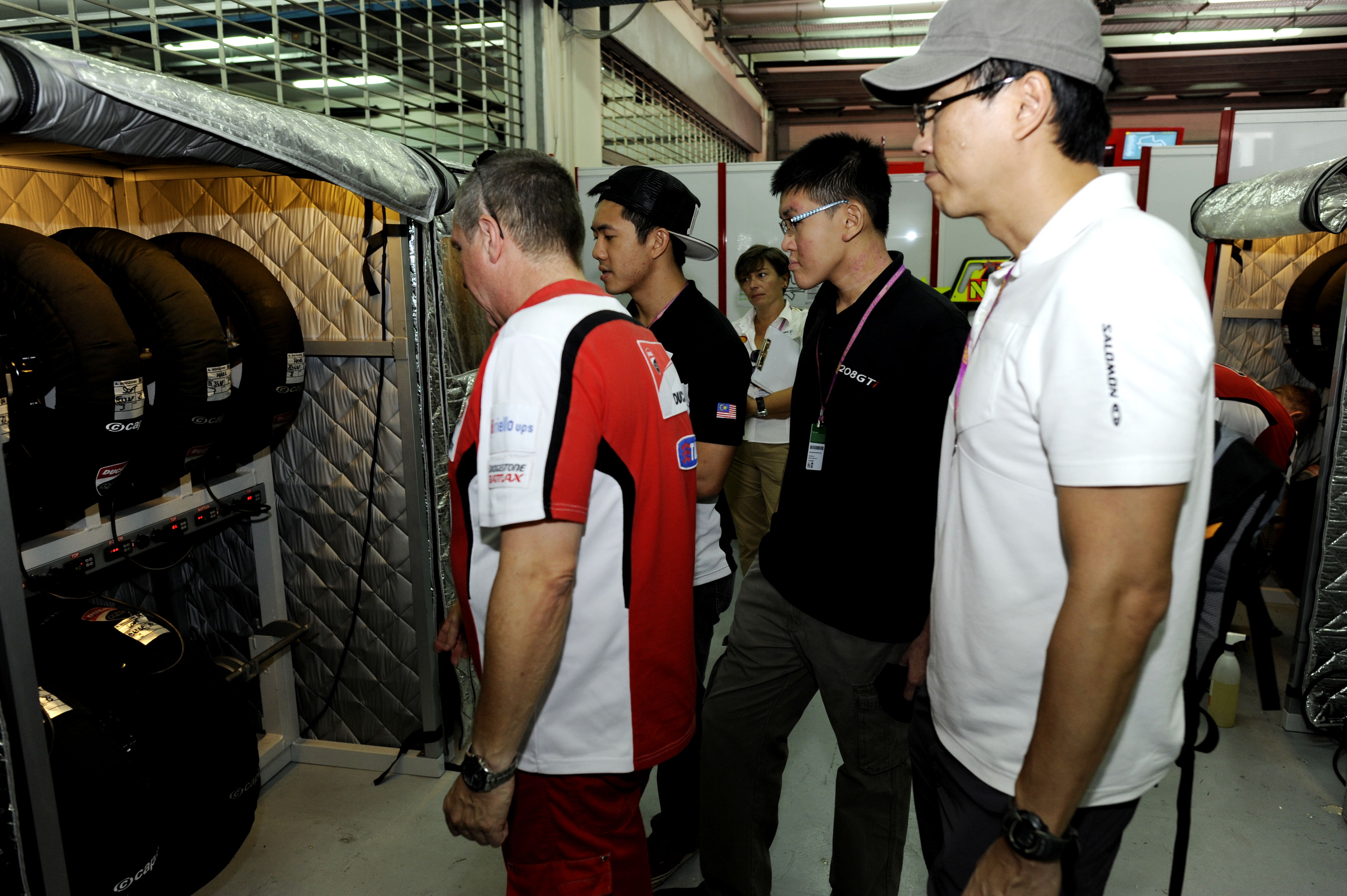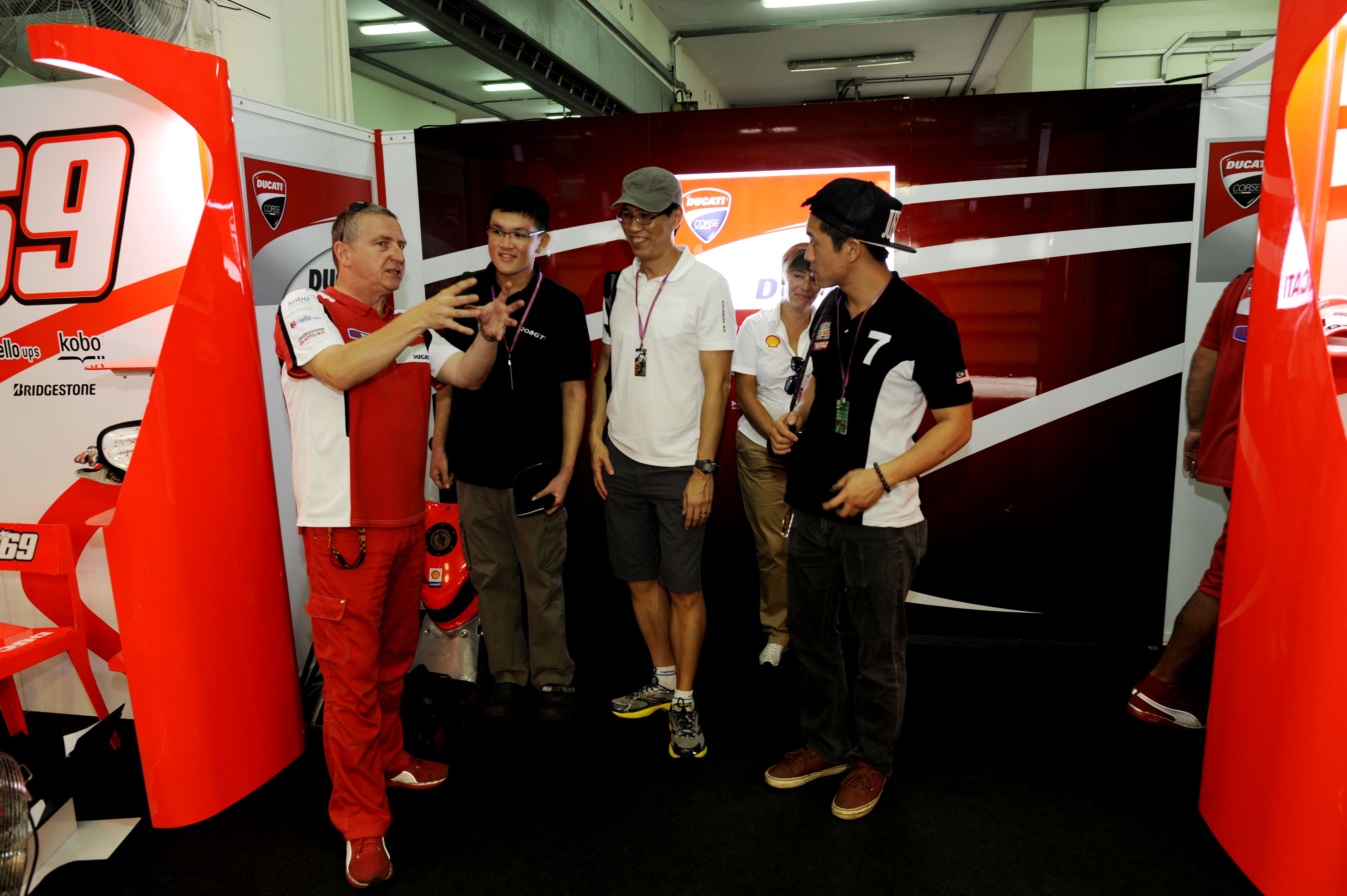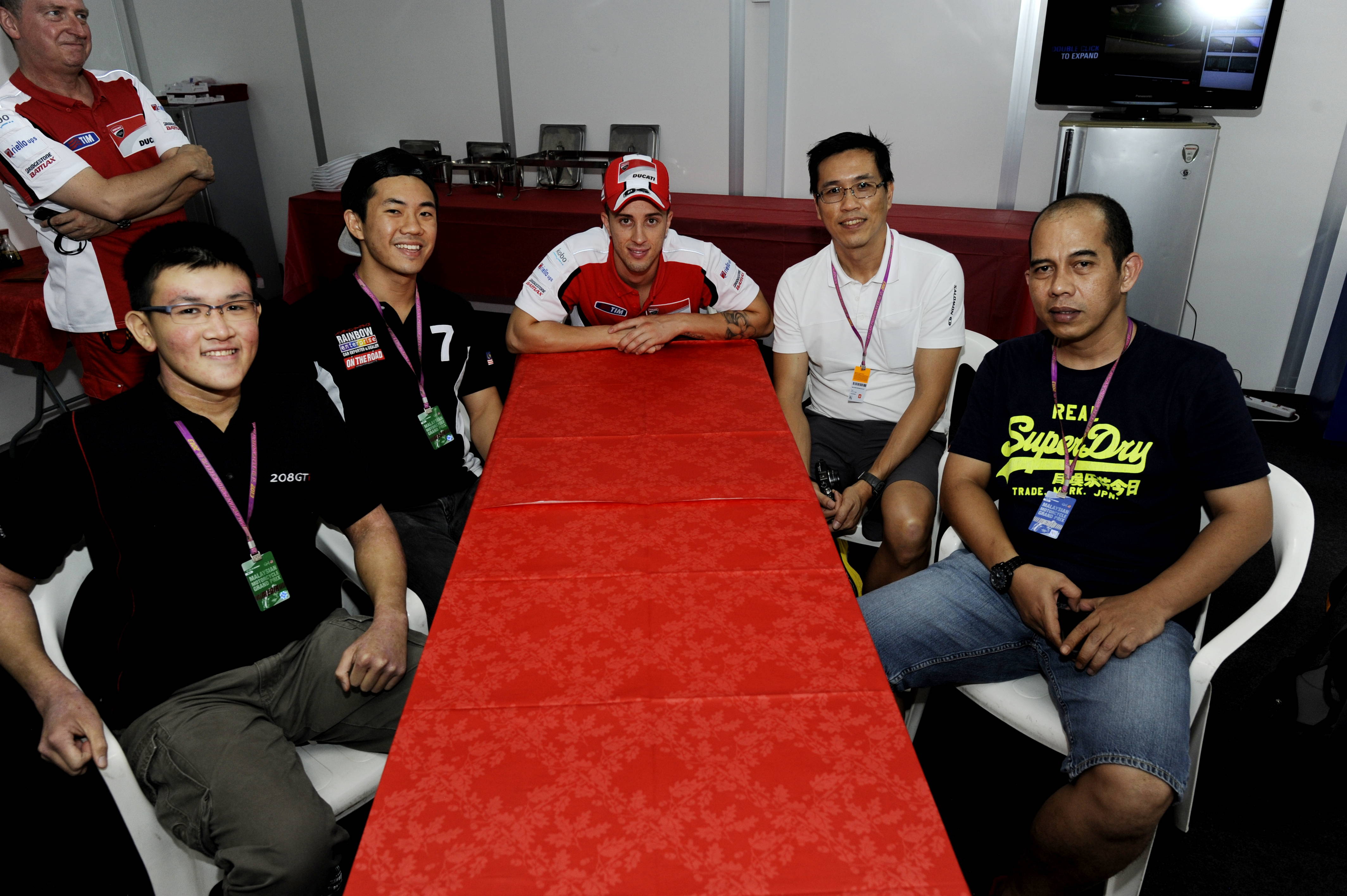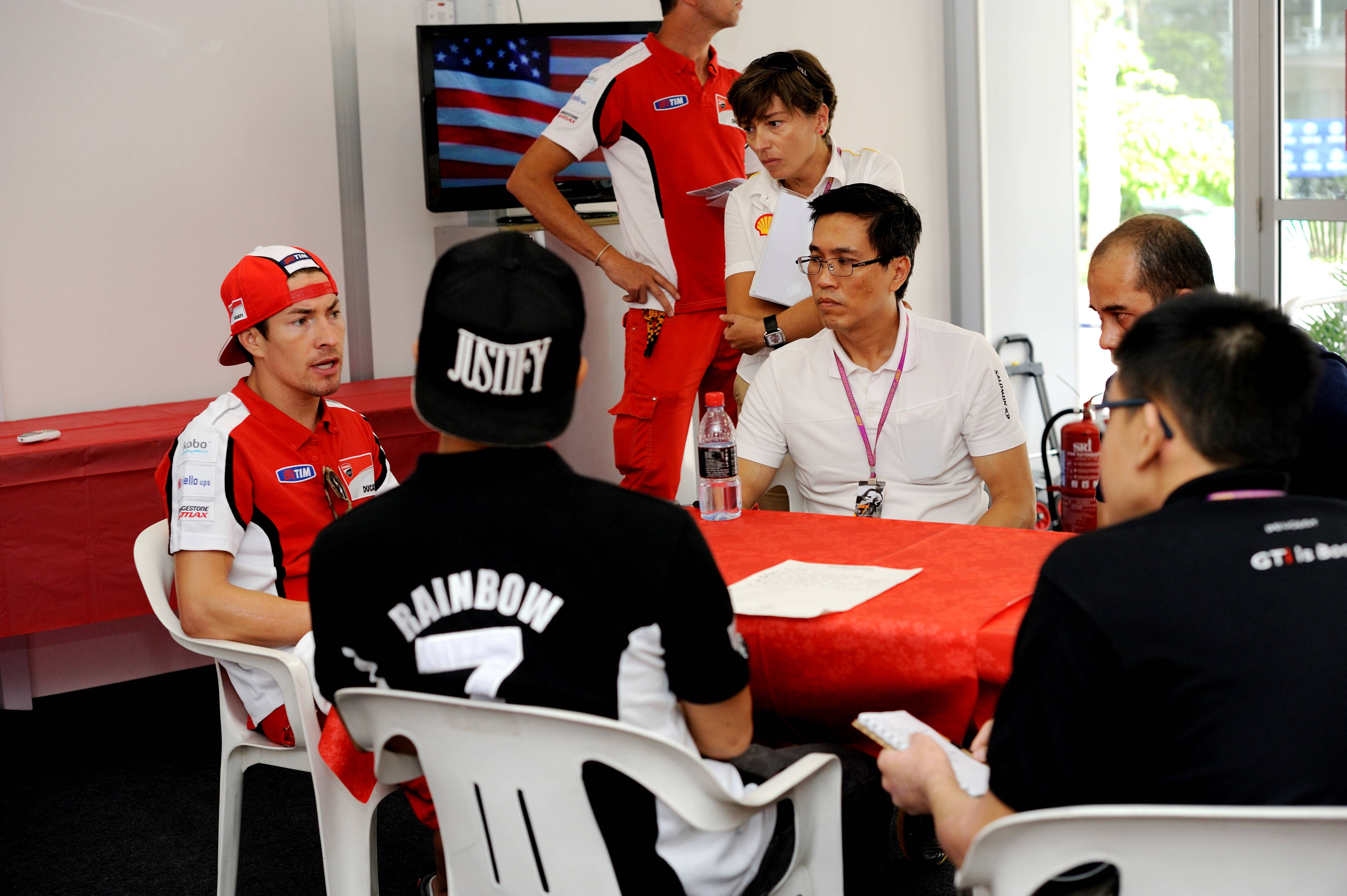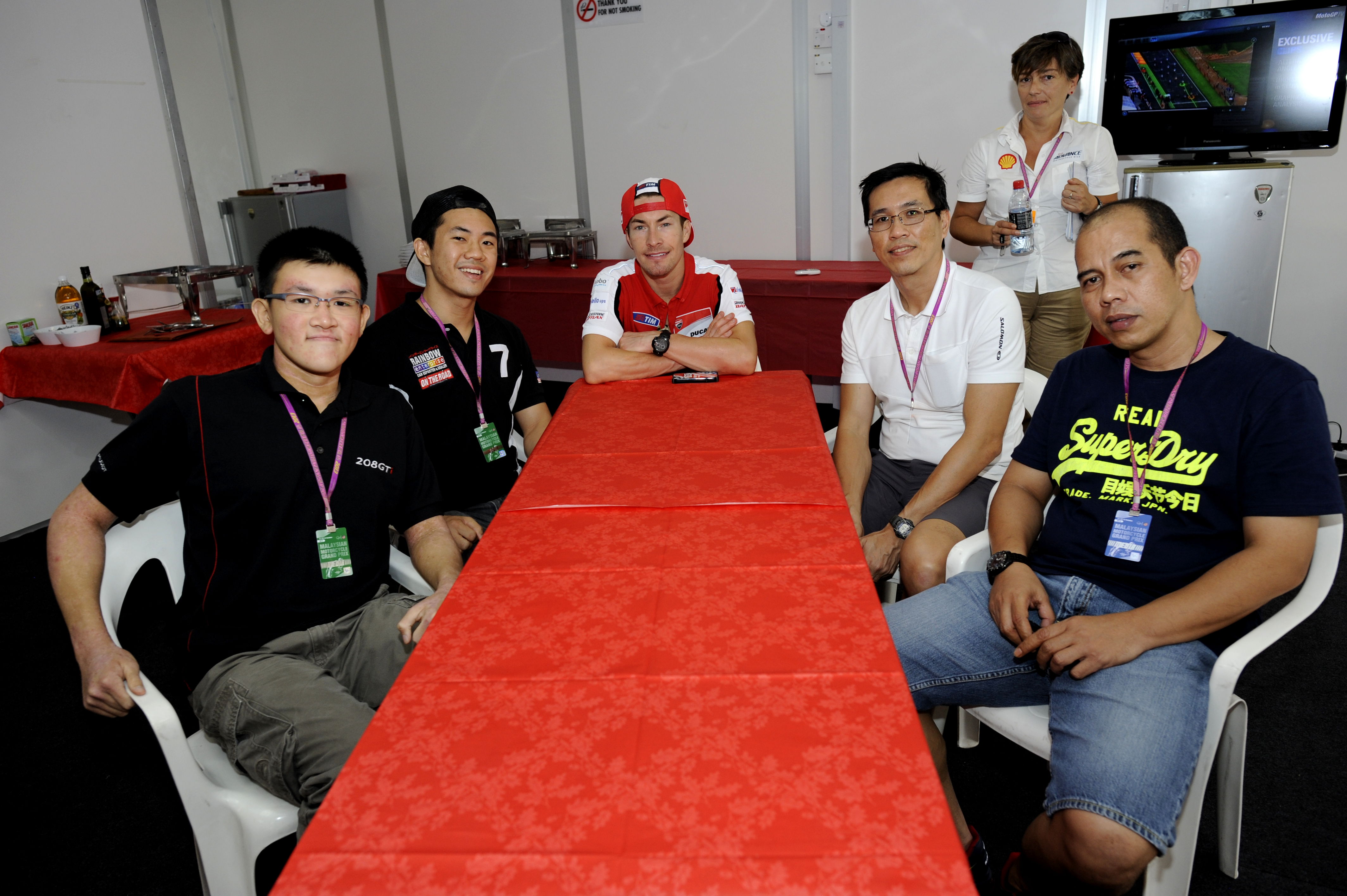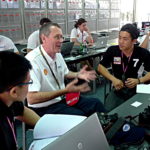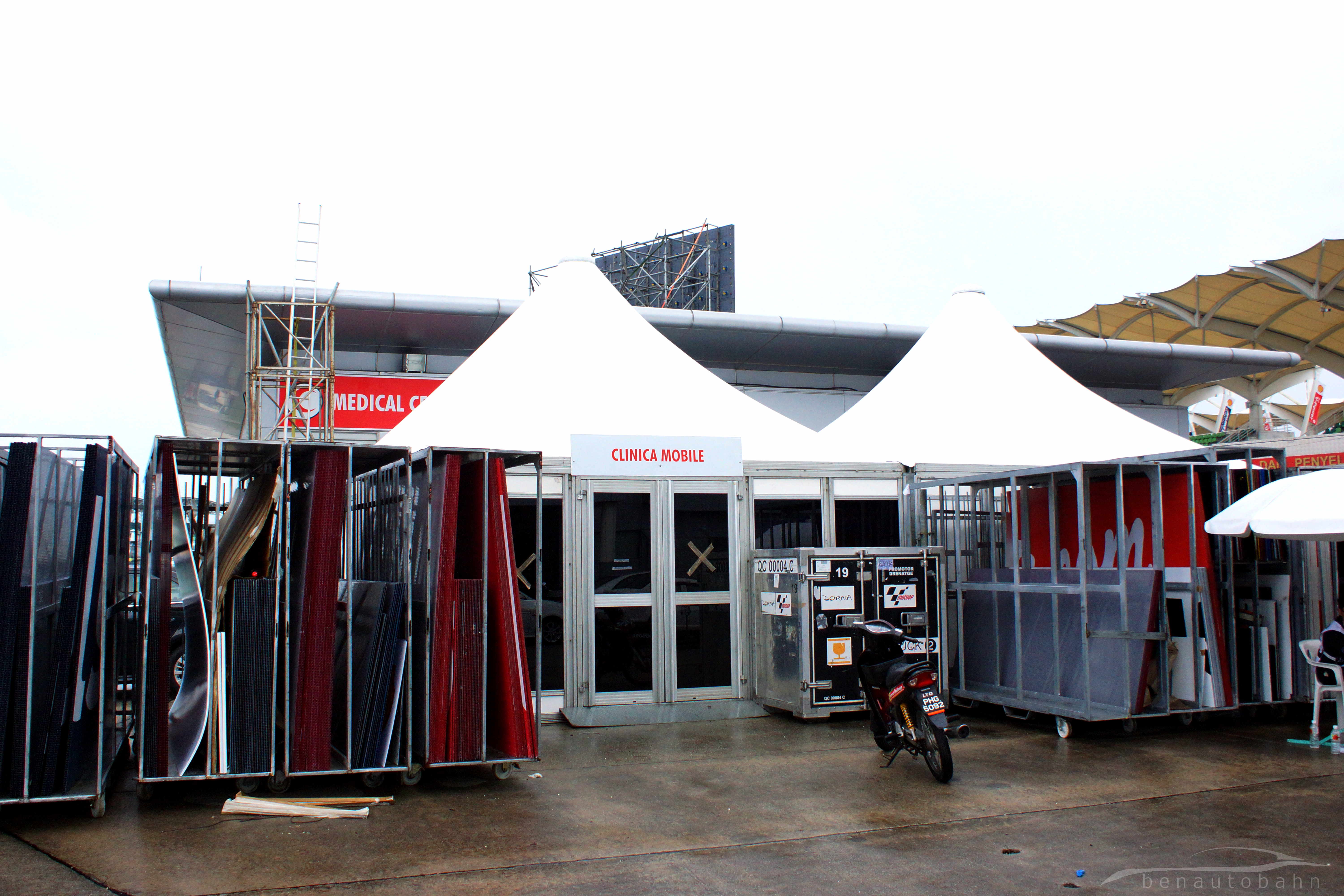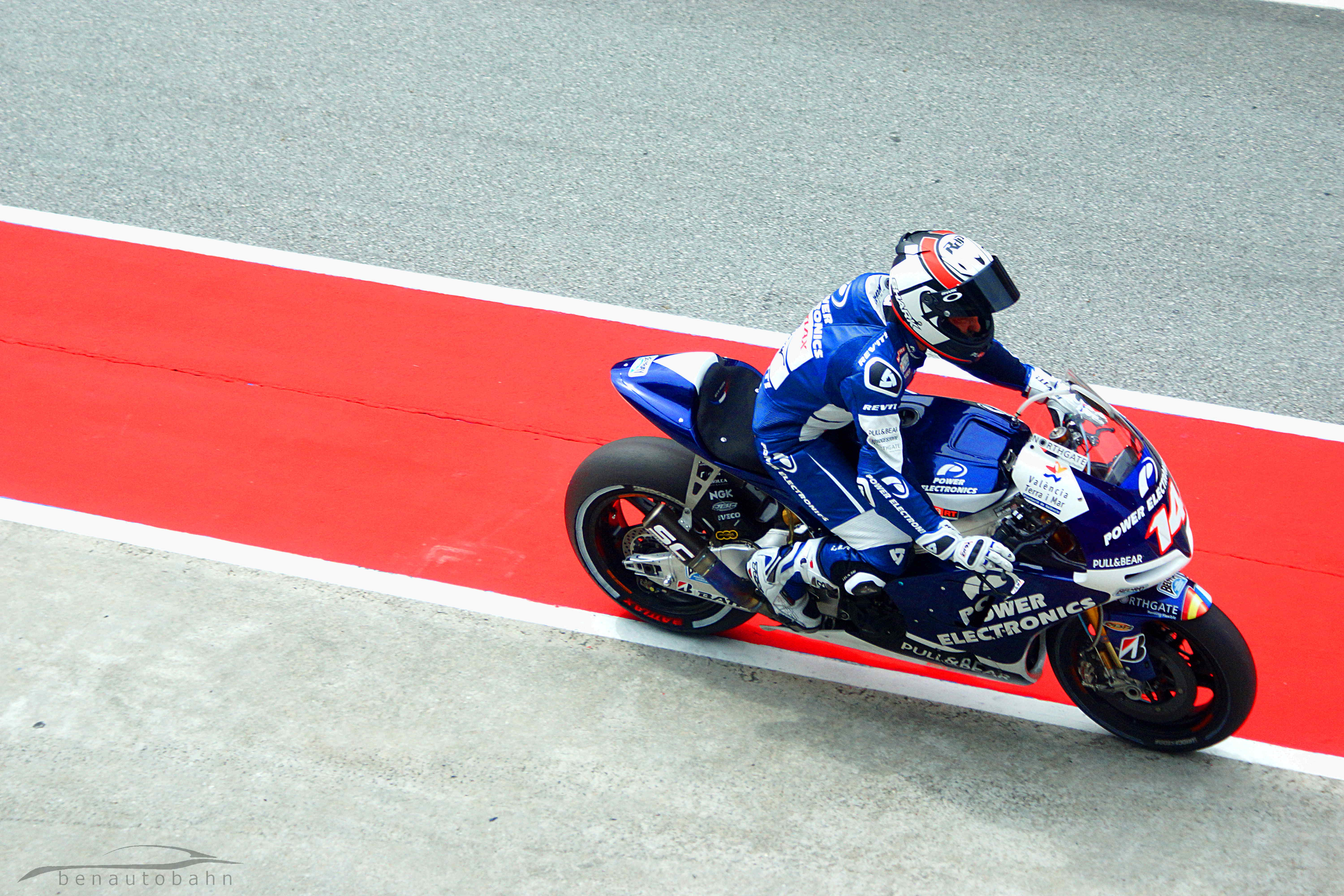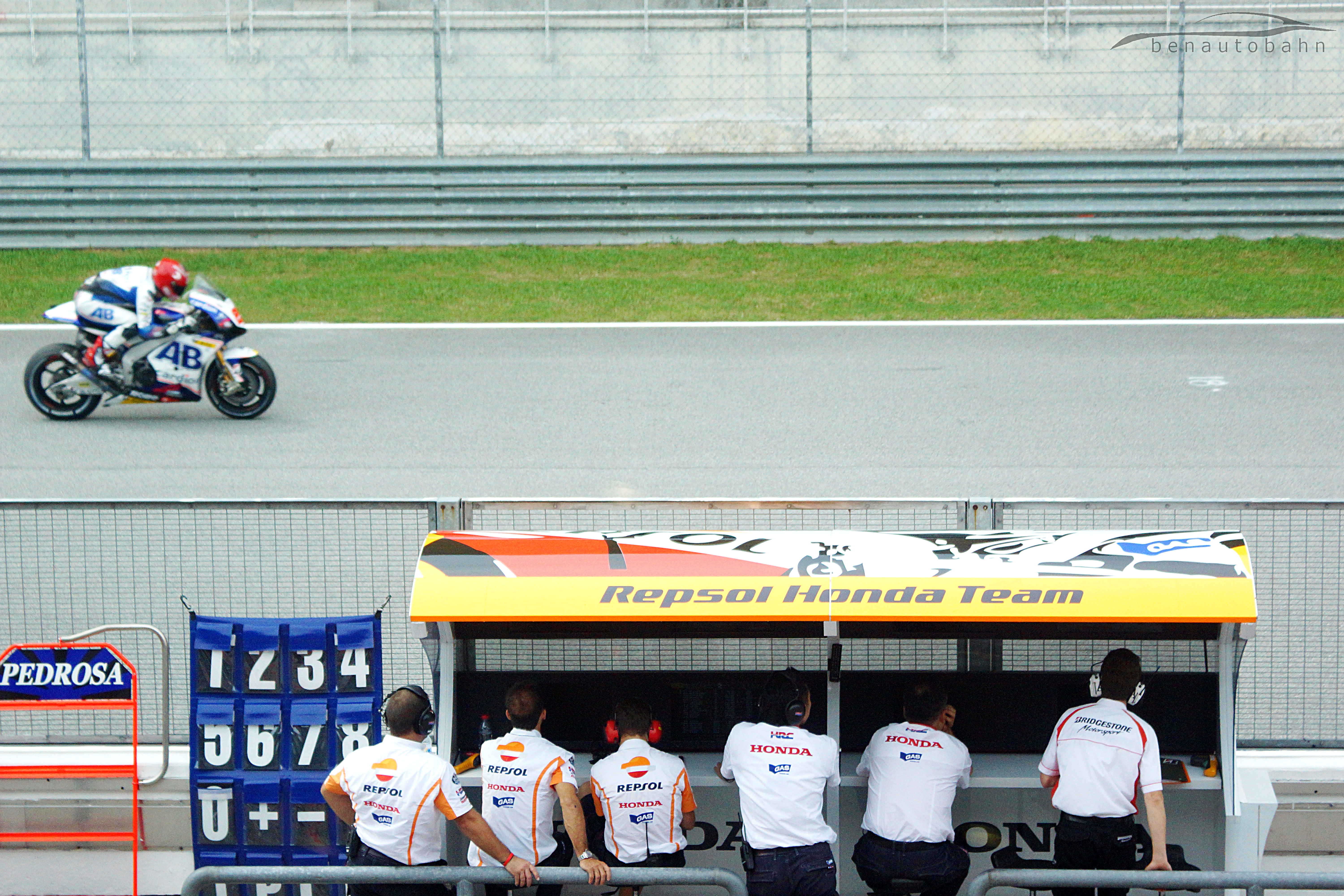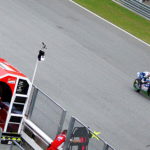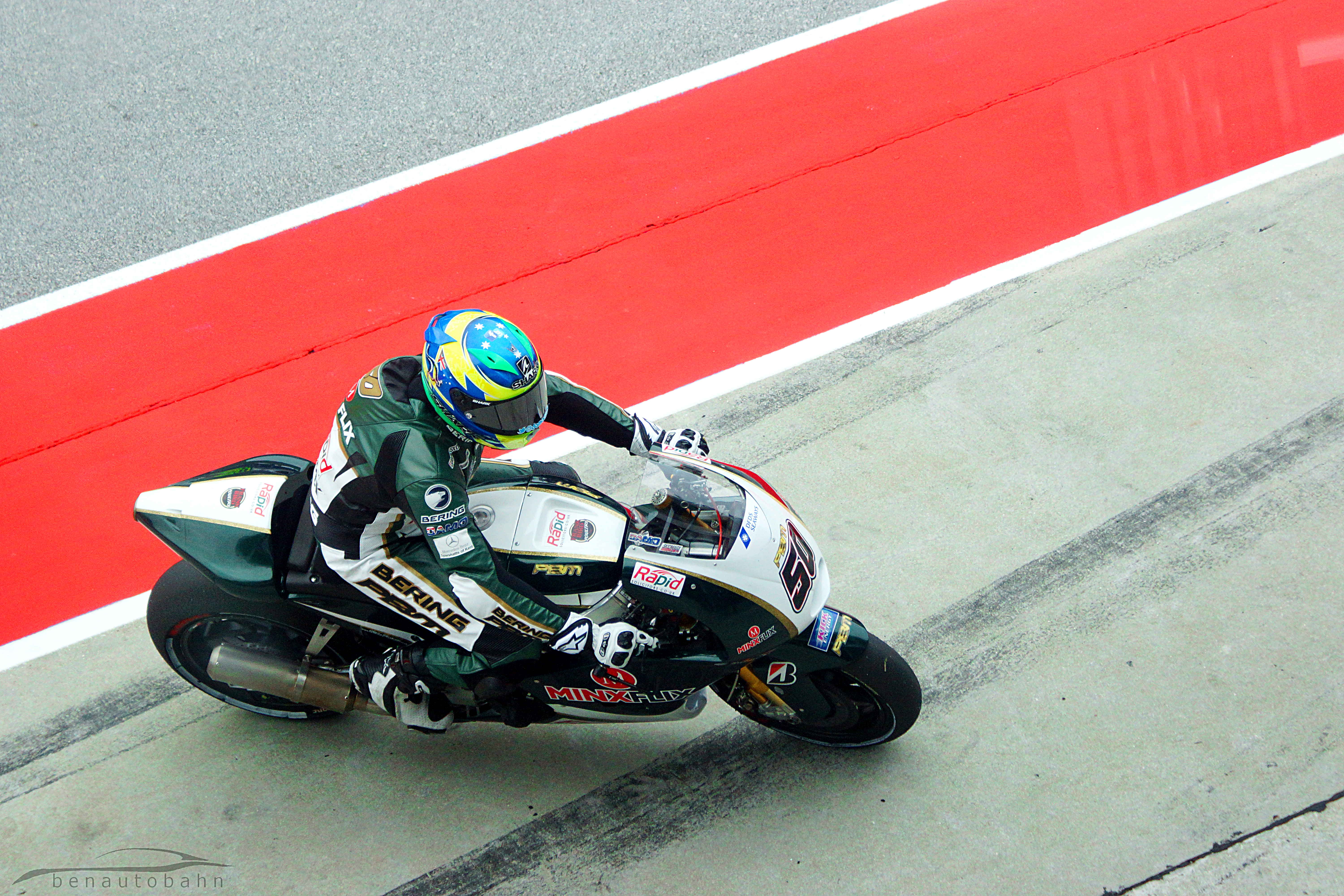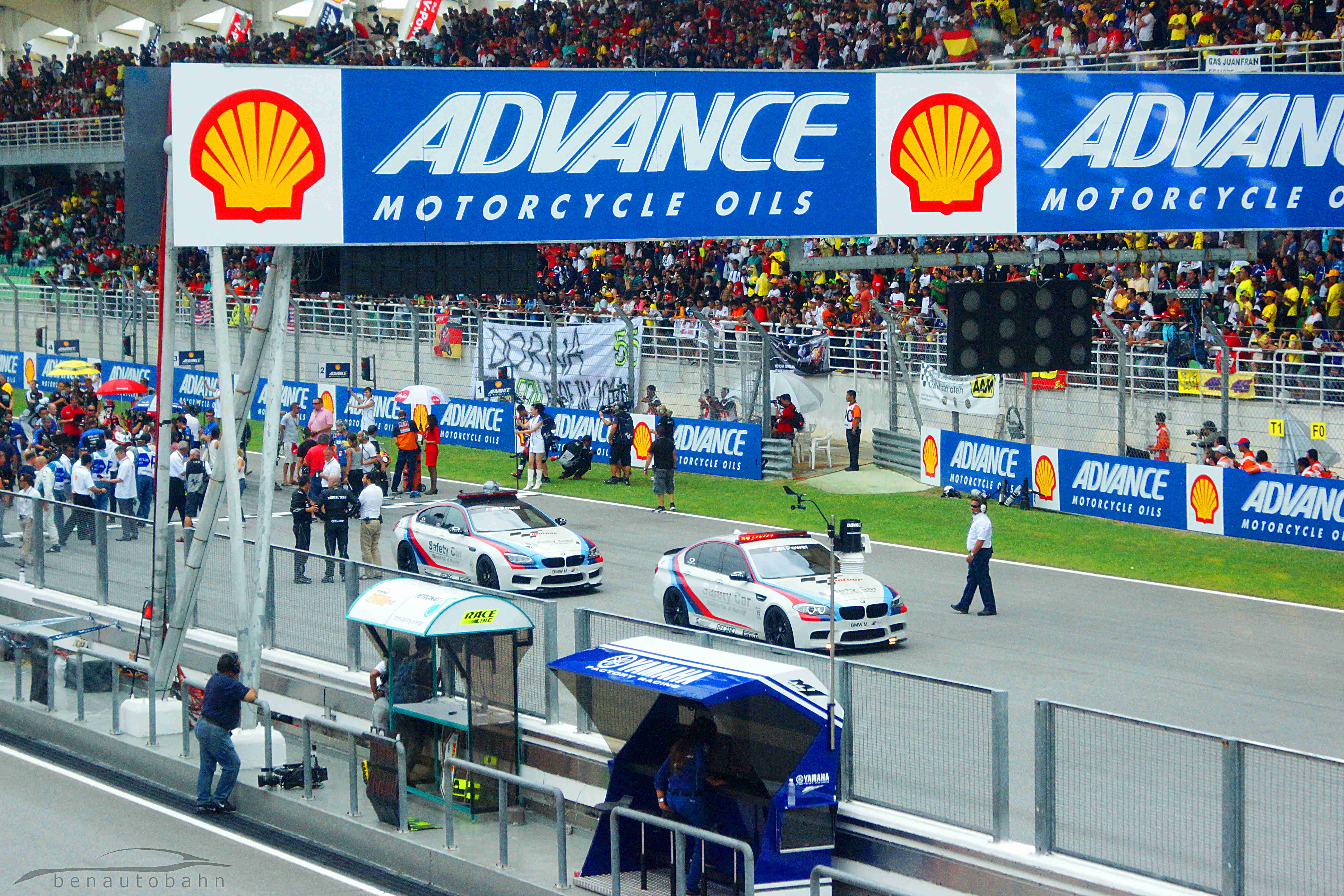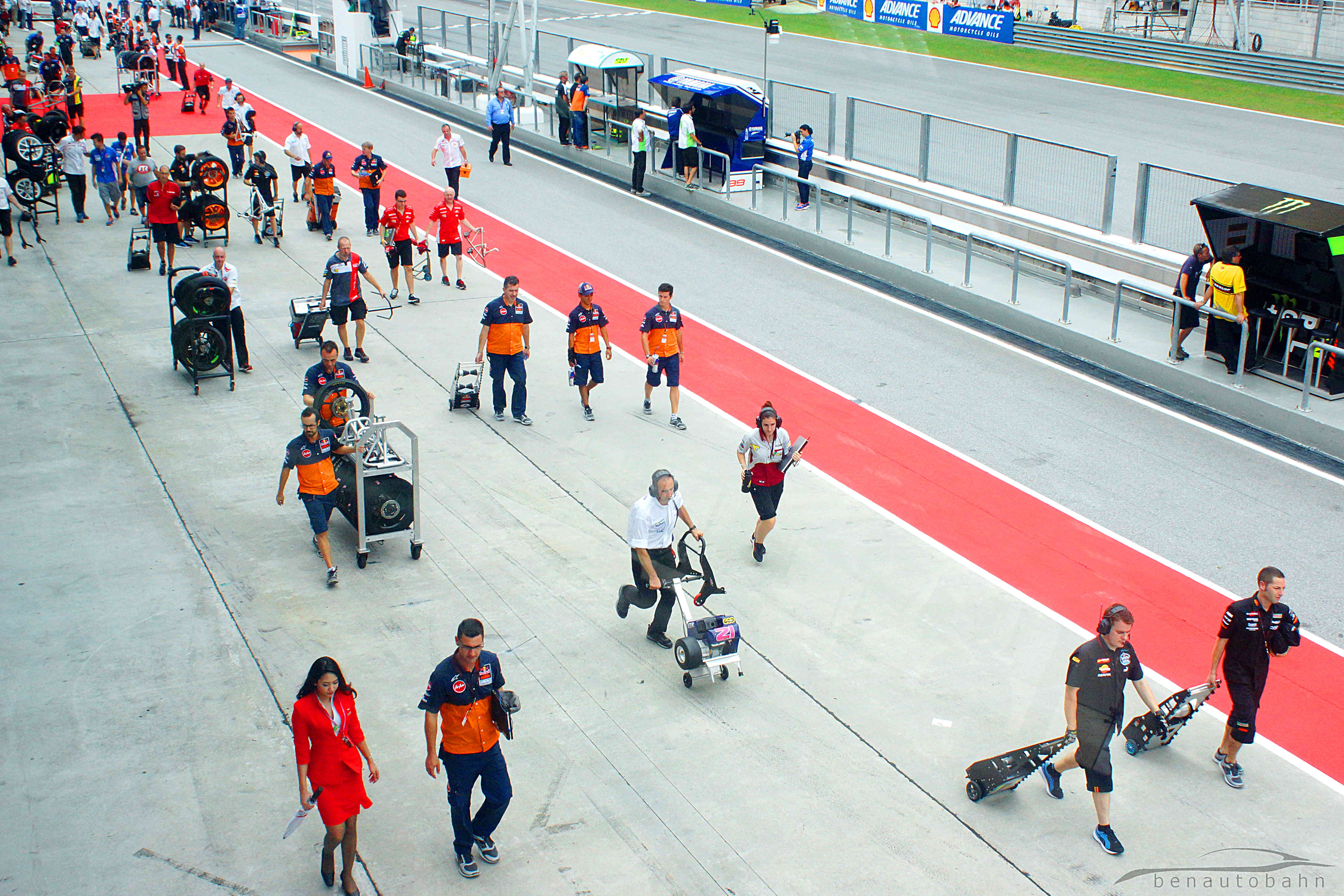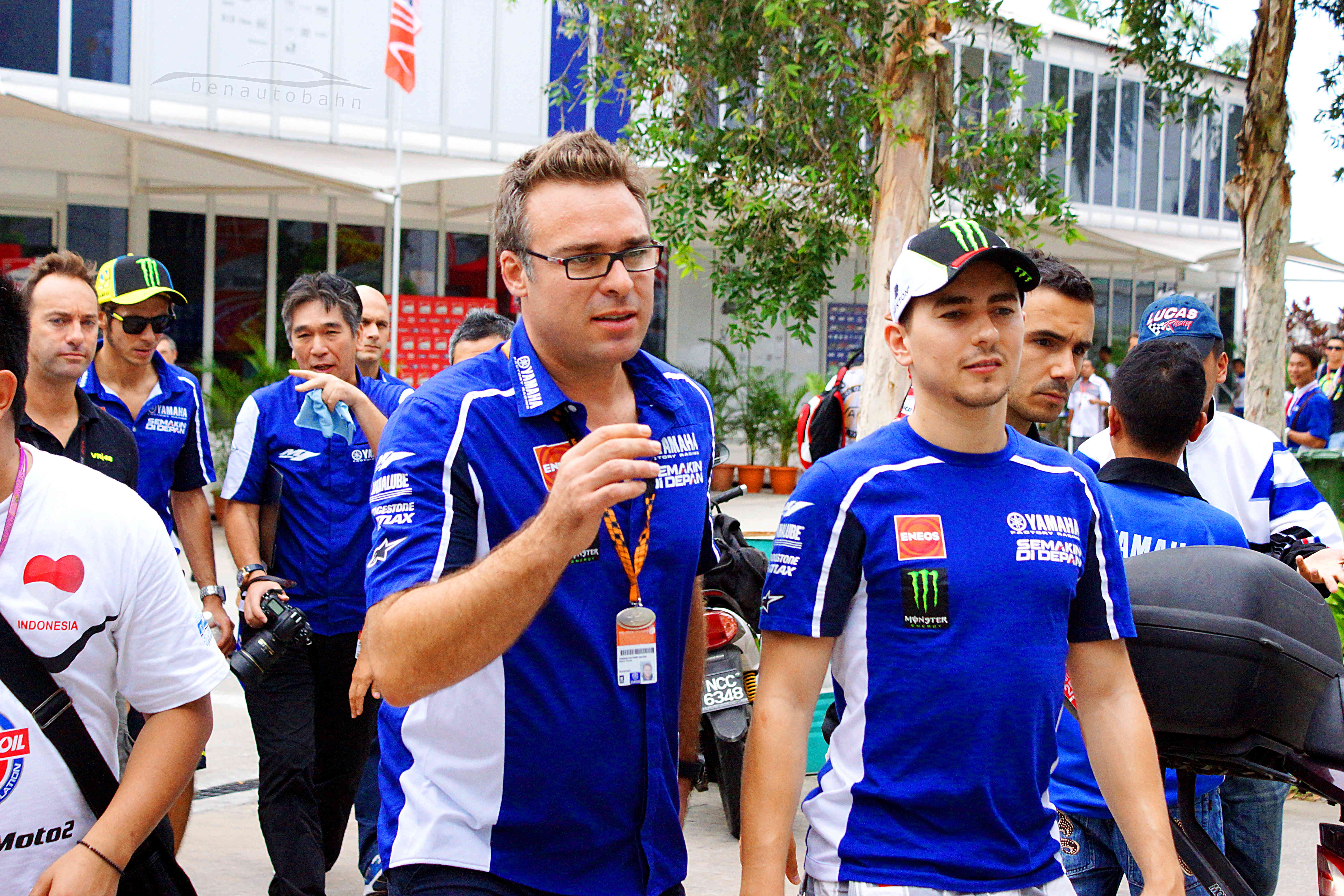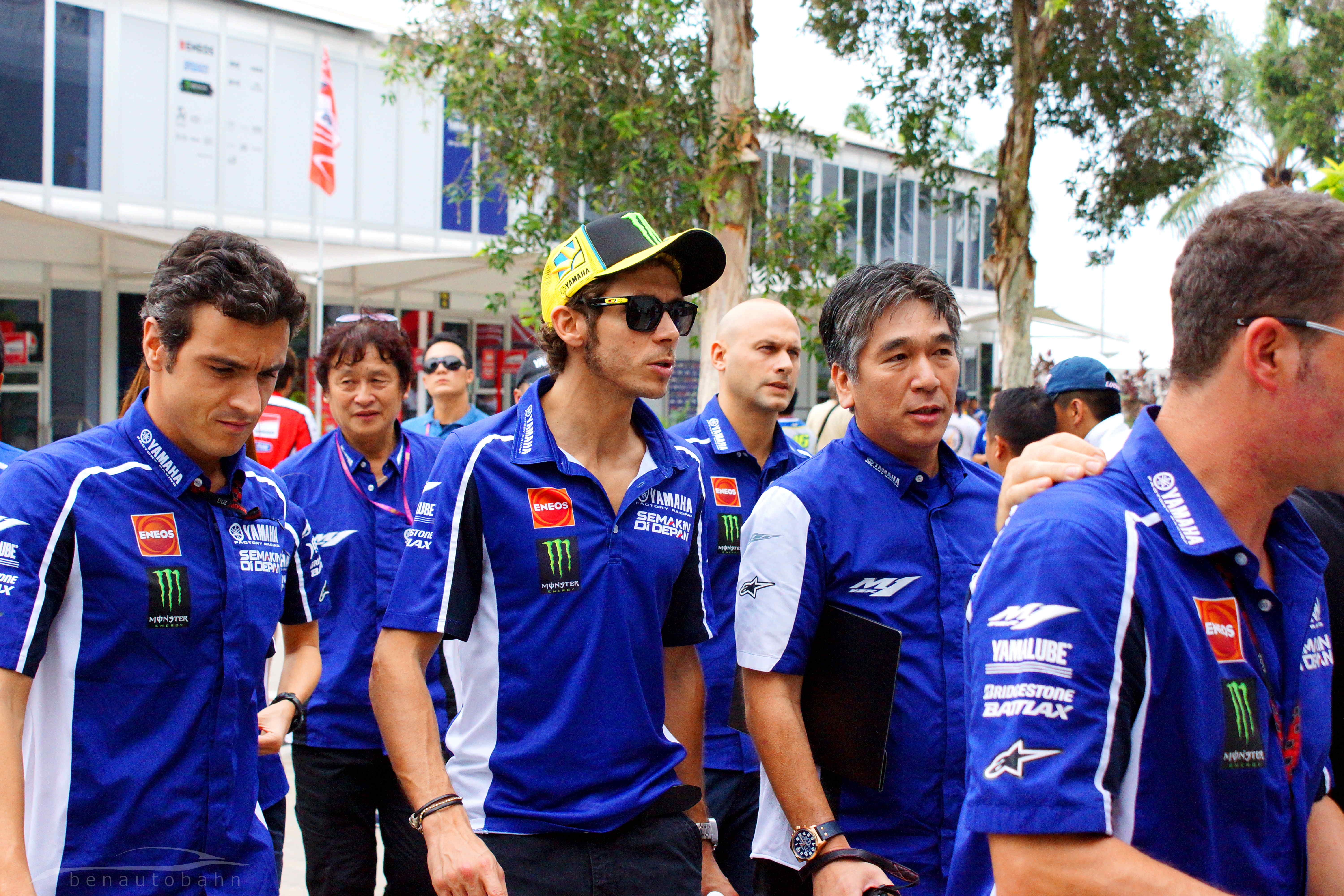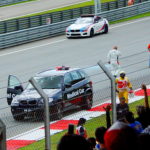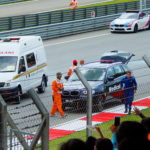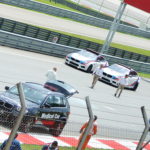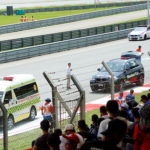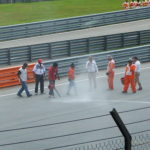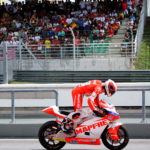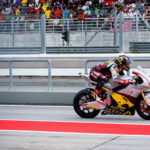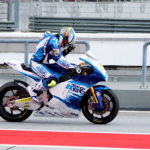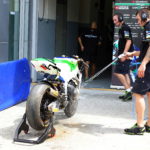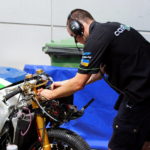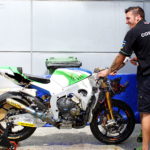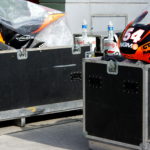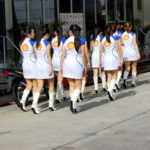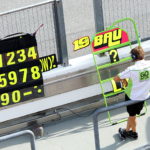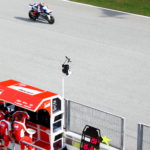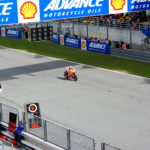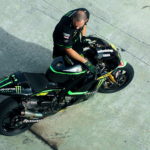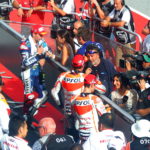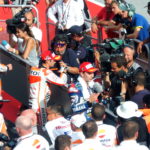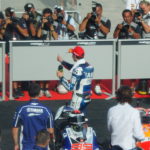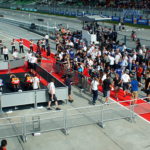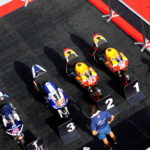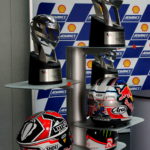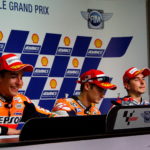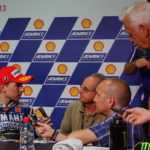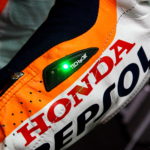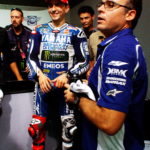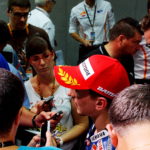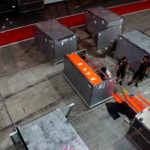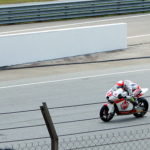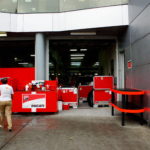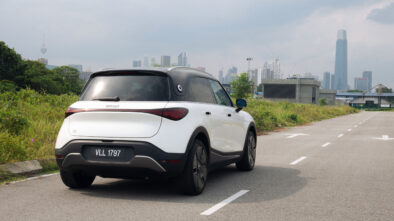Behind the Scenes of MotoGP Part 3: How MotoGP Deals with Accidents.
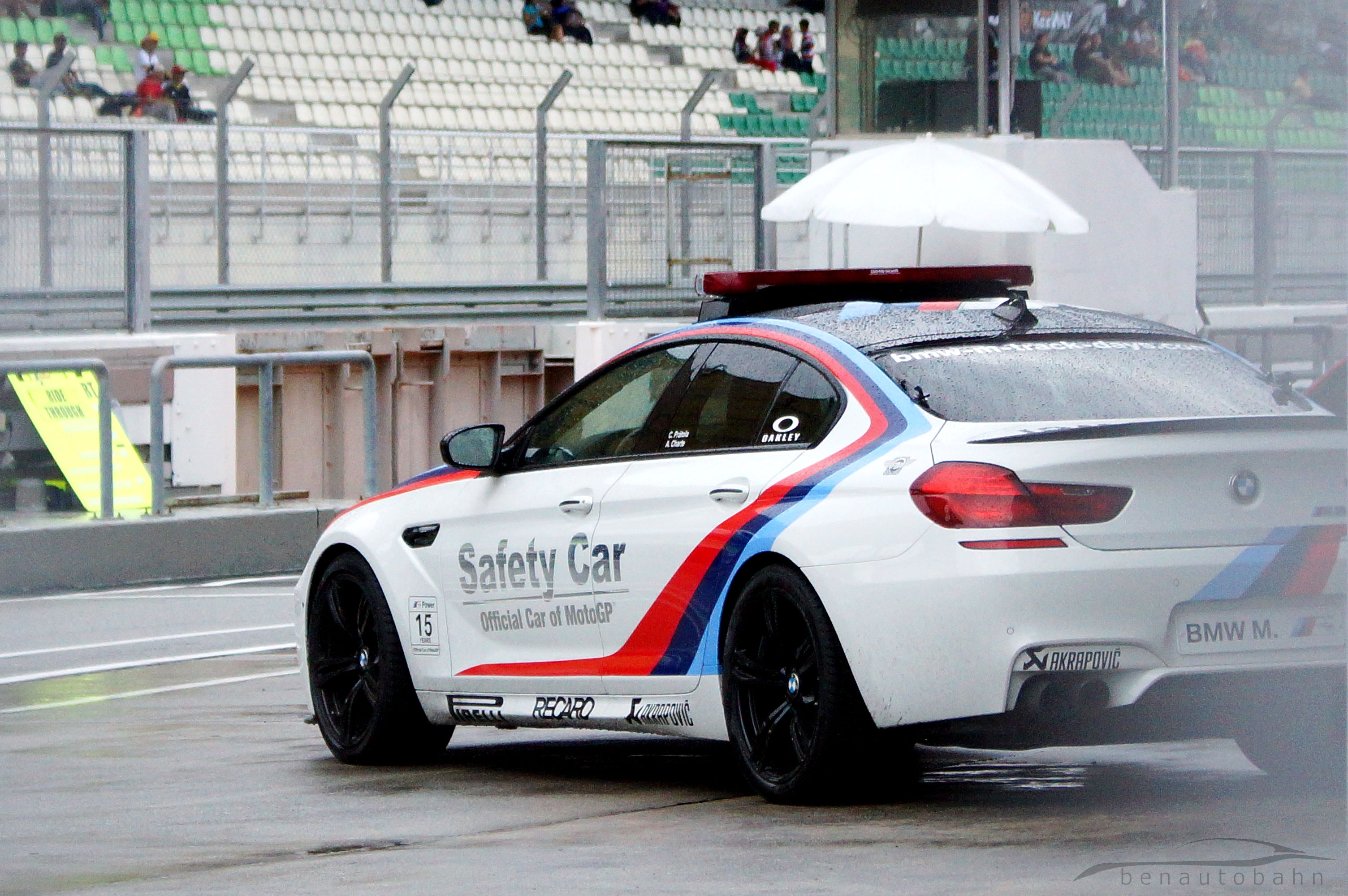
BMW M6 Gran Coupé with louder Akrapovič exhaust system. The name ‘Safety Car’ sounds boring but the cars they use are far from it
During my time at the 2013 Shell Advance Malaysian Motorcycle Grand Prix for my media coverage, I was unfortunate or fortunate enough to witness a minor accident during the Moto2 race. A slight contact between 2 riders after a tight corner caused 5 riders in total to fall off their motorcycles. Thankfully nobody was seriously injured, and I got the rare chance to witness how MotoGP emergency staffs responds to an accident.
This was good news for me as a journalist, as this meant I could take you through the whole safety procedure like how I see it! Welcome to the third and final part of my coverage on the behind the scenes of MotoGP. If you haven’t checked out the previous parts, click here to read Part 1 and click here for Part 2.

MotoGP rider Jorge Lorenzo in his racing suit and knee sliders.
Like I mentioned previously, a contact between two riders ended with five riders in total out of the race. As expected at such high speed, both riders and motorcycles slid on the track for quite some distance, before slowing down to a stop when they hit the gravel run-off surface which are designed to slow down moving objects. Protecting riders in these situations are high tech racing leathers which are mainly made of kangaroo leather as they are more resistant, flexible, and lighter than cow hide.
MotoGP riders can also achieve staggering angles of over 60 degrees when cornering, and their “knee sliders” which constantly rubs against the tarmac are made of thermoplastic compounds, where each rider can use up to 100 pairs of them per season.

Alpinestars Tech Air worn by 2013 MotoGP world champion, Marc Marquez.
MotoGP riders’ apparel also comes with built-in spinal column protection and chest protectors which are made from a combination of carbon, Kevlar (material used for bulletproof vests), and also titanium for ultimate protection against the worst. These apparels are supplied by a variety of brands, but in the case of MotoGP Respol Honda Team, their riders wear Alpinestars Tech Air which can inflate the suit in vital areas during emergencies just like a car’s airbag.
And if that is not advance enough, every MotoGP suit are equipped with sensor patches which can measure G-force, riders’ pulse, pressure points and even body temperature. An average suit weighs around 3 kilograms and the cost for one is unimaginable. Plus I haven’t even got to the suit’s cooling system, and the helmet, gloves, and boots that come with it. MotoGP riders’ apparel is as close as it gets to a present day Iron Man suit. The only thing which tops it today would probably be the ones worn by astronauts.

Paramedic rushing out from the Safety Car…
Now back to the incident. As soon as the accident occurred, the track was immediately closed and the rest of the riders returned to their respective pit garage and wait until the coast is clear. Thanks to the efficiency of the staffs, the riders do not have to wait long. The first to arrive at the scene were the track marshals (all dressed in orange) located at several key areas around the track, and the crash scene was one of them. The marshals checked to see if the riders are fine (they are) before removing the larger debris such as the motorcycles’ body panels from the track. At this moment, the safety car is already on its way.
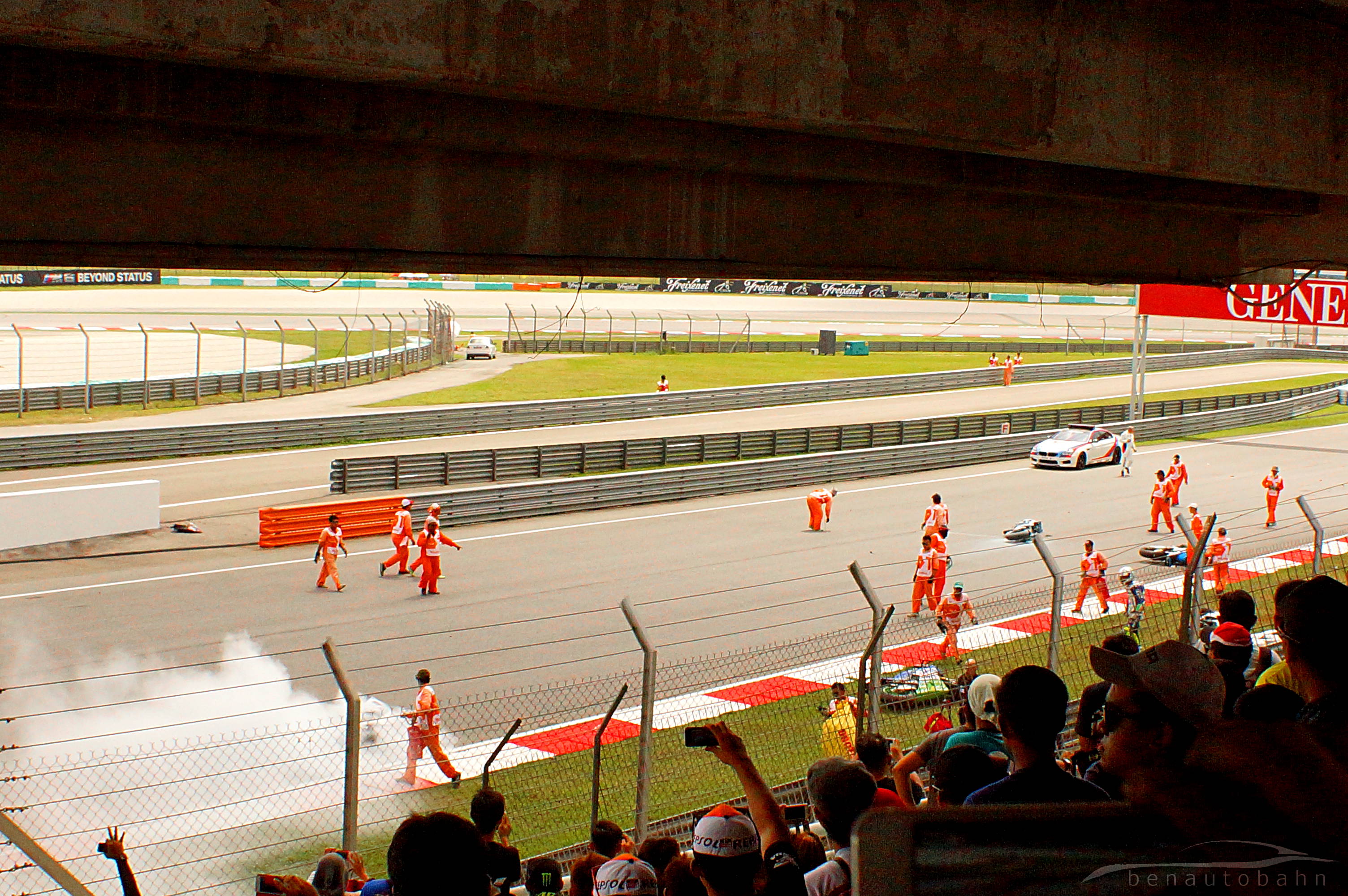
Crash scene from a different perspective…
From the spectators’ point of view, a crash or accident during a race is part of the excitement. Most of the spectators present that day who also witnessed the incident stood up, gasped in astonishment, and many of them took out their mobile devices to take photos or record the whole scene. I joined the club, and wasted no time taking photos which you see here. Further adding to the excitement was that one of the motorcycles lighted up on fire seconds after the incident, inducing further gasping and furious discussions among the spectators whether it would explode.
Which it did not (This is not Hollywood). It is very amusing, funny even to witness such reactions in person. And all these add up to an indescribable atmosphere which got me to understand why people enjoy attending any live races in the first place.

Motorsports have been safer than ever, but the risk remains…
Coming back to the accident. The first vehicle to arrive at the scene was the BMW M6 Gran Coupé Safety Car fitted with Akrapovič exhaust system (hey this is still a car website after all) which really looked the part with the LED siren lights and full body BMW M Division livery. The paramedic from the M6 Gran Coupé Safety Car immediately rushed out from the car towards the riders to check their condition. Fortunately, most of the riders were fine and was able to get on their feet and did not require serious medical attention from the paramedic. Either way, one paramedic was far from sufficient…
Brief moments later, a BMW X5 Medical Car arrived with more paramedics. And you may have already guessed it, BMW is MotoGP’s official car supplier. The additional paramedics from the Medical Car quickly attended the one or two riders who were still on the ground and may have sustained minor injuries. Soon enough, the first ambulance van arrived, and the first non-BMW vehicle for obvious reasons (BMW do not make vans). An ambulance was obviously not enough to accommodate all of the riders, and another ambulance in the form of a Toyota Hiace van arrived later to pick up the rest of the riders.
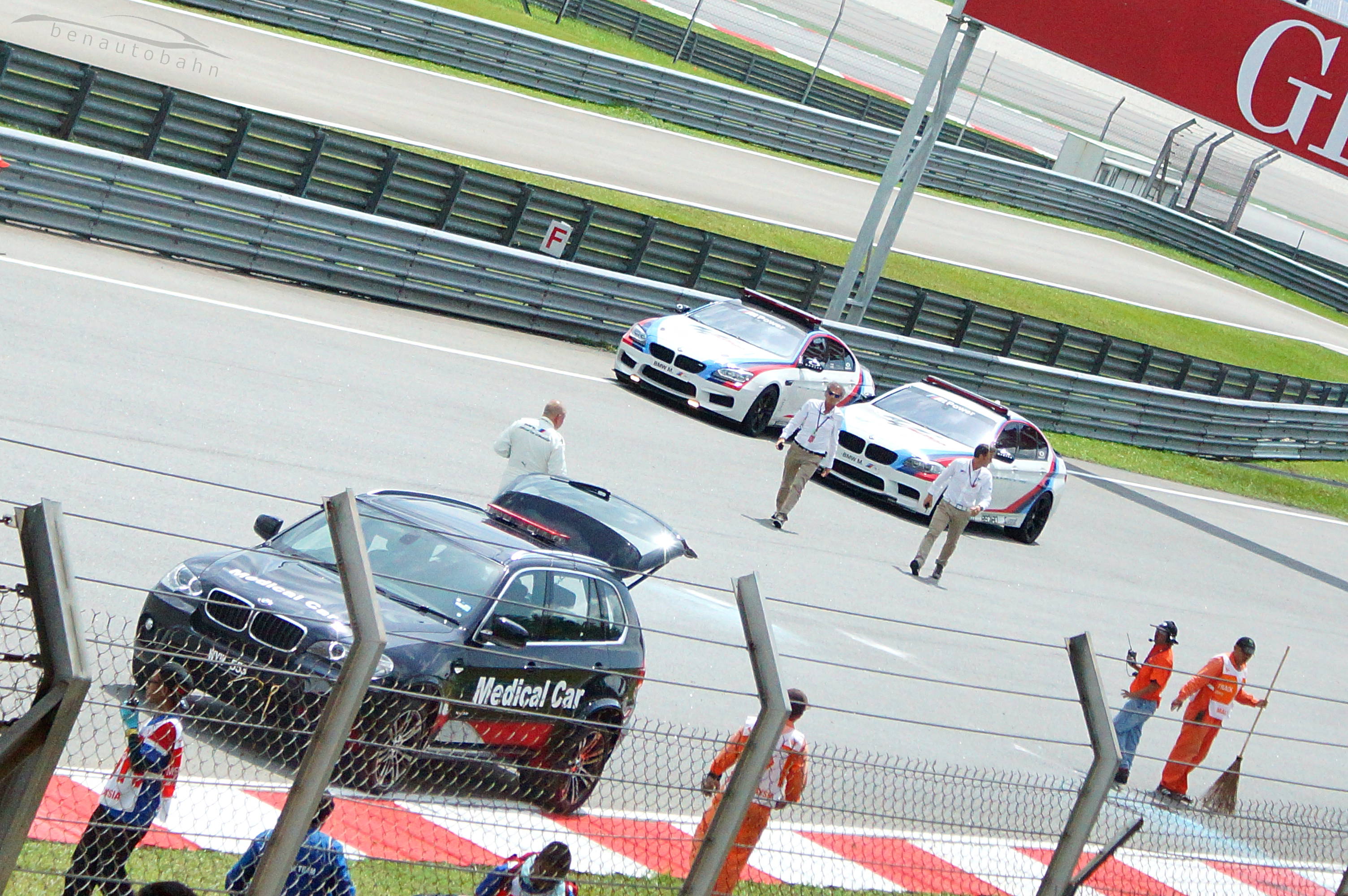
Loris Capirossi (right) and his partner (left) from the M5 Safety Car walking towards the crash site
And with all the riders safely transported out of the track, there are still more work to be done by the safety staffs. Soon enough, the second Safety Car, a BMW M5 (also fitted with lighter & louder Akrapovič exhaust system) arrived at the scene with Loris Capirossi on the wheel. Loris had won eight MotoGP Grand Prix back in 2011 and he is now a member of the MotoGP Race Direction and Safety Commission and operates as a consultant for safety, amendments to rules, competition procedures and the homologation of new tracks.
Loris and his partner in from the M5 Safety Car was there to ensure the track is completely free from foreign objects and tiny debris which may endanger other riders on the track. The track marshals used good old fashion brooms and also leaf blowers to blow away tiny particles of plastic or glass which may have produced during the crash. Both Loris and his partner were constantly monitoring the marshals to ensure they are doing their job properly. Only after the track was fully cleaned and operational did the M5 Safety Car left the scene. Racing resumes soon after.

The BMW ///M5 Safety Car was the last vehicle to leave the scene
And that is that if you are a spectator. However, the journalist in me wanted to find out more especially what happens to these damaged motorcycles. As expected, the damaged motorcycles were brought back to their respective pit garages. And in this case, we are looking at the Technomag carXpert Moto2 team’s motorcycle.
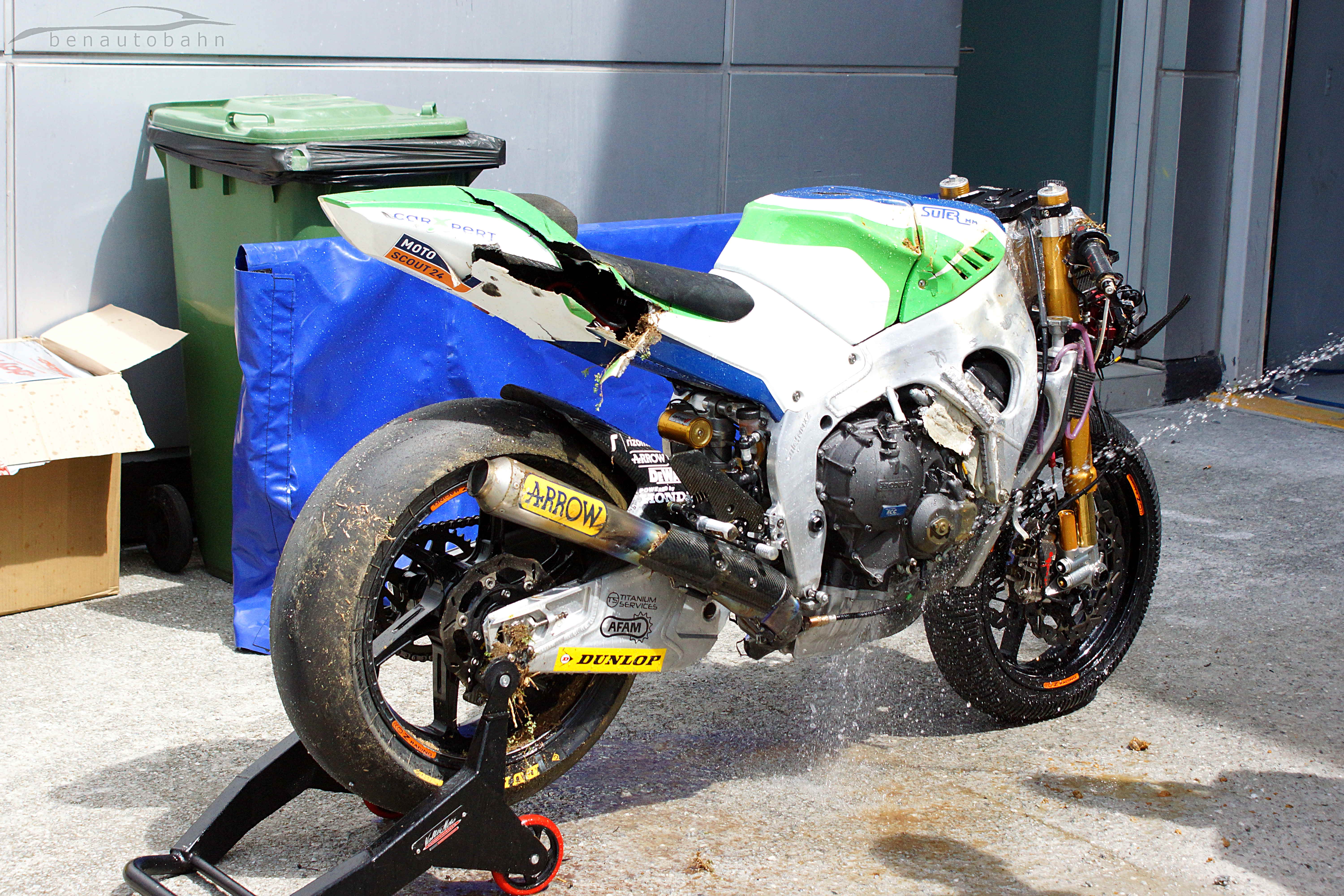
Aftermath of one of the motorcycles involved…
As soon as the bike arrived at its pit garage, the team’s engineers and mechanics came out to assess the damage which was thankfully not very serious. The bike was washed down with water to get rid of the dirt in order to get a better look of the damage which at the same time cooled down the bike. One of the staff then took out the all-versatile tool that is duct tape and began taping together the front section of the bike which took the most damage as a temporary fix.
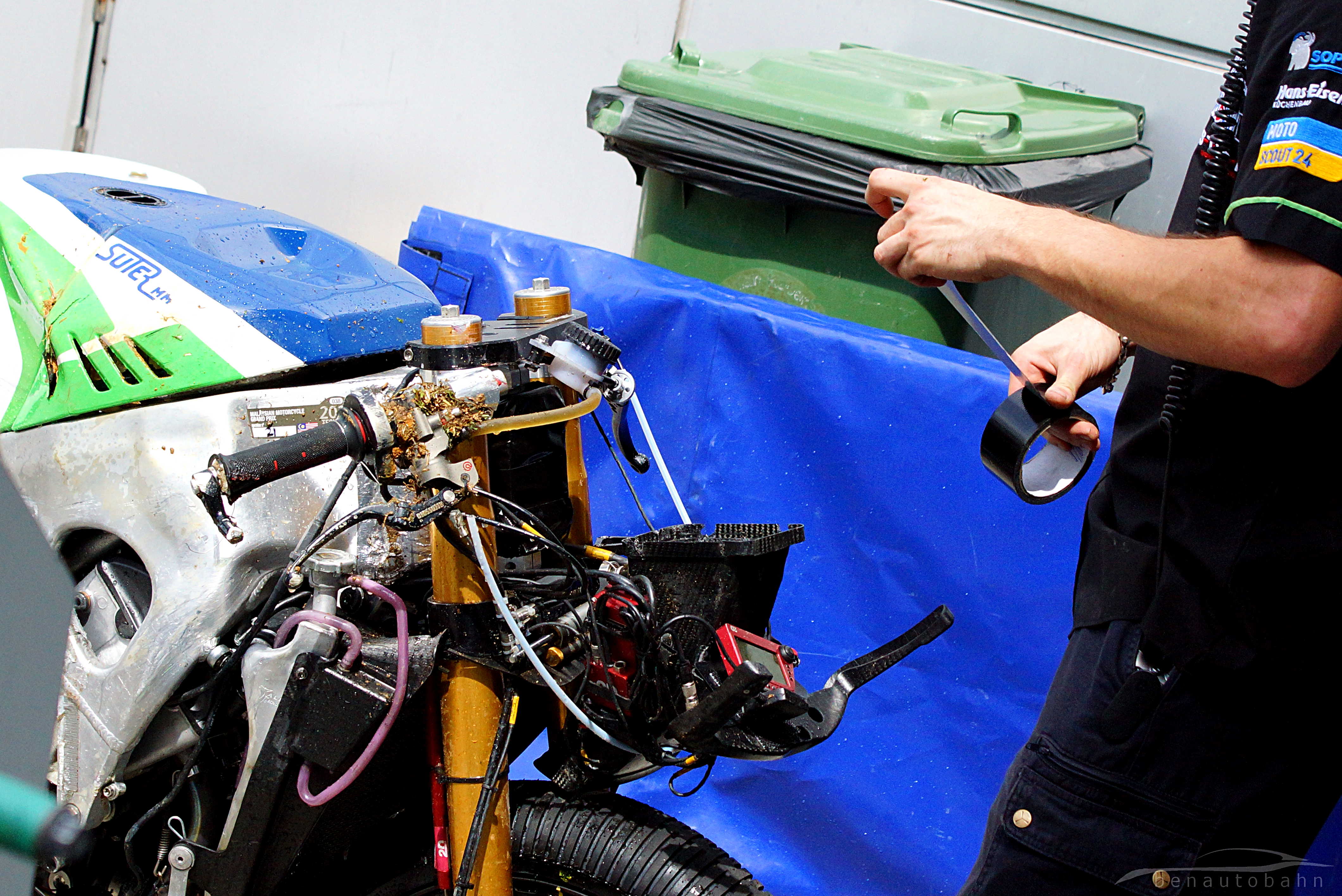
Duct tape: The solution to everything (mostly)
And there you have it. An interesting insight to the world of MotoGP motorcycle racing World Championship. Thank you so much for reading my three-part series on the behind-the-scenes of MotoGP. If you haven’t read the previous parts (which I highly suggest you do), click here for Part 1 and click here for Part 2. I hope you enjoyed it as much as I did covering it, and I look forward to attending and covering even more similar automotive events!
Next up, Formula One? Fingers crossed…
- Being shown where Ducati preheats their tires before it goes on the track
- Our interview with MotoGP rider, Andrea Dovizioso.
- Interview with MotoGP rider, Nicky Hayden.
- Huge honor to have the privilege to interview these MotoGP riders. Here’s hoping F1 drivers are next!
- Interview with Andrew Hepher from Shell.
- Such rules do not apply to us that day
- MotoGP rider Cal Crutchlow (left)
- Michele Zasa (left) showing us where riders perform their physiotherapy
- Insignificant looking building which plays a very significant role in MotoGP
- BMW M6 Gran Coupé with louder Akrapovič exhaust system. The name ‘Safety Car’ sounds boring but the cars they use are far from it
- Pit girls never fail to get people’s attention
- Interviewing Ducati MotoGP Project Director, Paolo Ciabatti.
- Motorsports have been safer than ever, but the risk remains…
- MotoGP rider Hiroshi Aoyama
- Moments before the race begins…
- Jorge Lorenzo (right), and Valentino Rossi (rear left, both wearing caps) chatting with their team.
- There are no better place to meet your favorite riders up close than the pit garage.
- MotoGP rider Nicky Hayden meeting his fans.
- Paramedic rushing out from the Safety Car…
- Crash scene from a different perspective…
- Loris Capirossi (right) and his partner (left) from the M5 Safety Car walking towards the crash site
- The BMW ///M5 Safety Car was the last vehicle to leave the scene
- Marc VDS Racing Team
- “I wonder how my bike end up here…”
- Aftermath of one of the motorcycles involved…
- Duct tape: The solution to everything (mostly)
- Pit garages on the left, and hospitality areas on the right.
- Members of the media awaiting the arrivals of the three winners
- Winners being interviewed
- Jorge Lorenzo posing for photographers
- Winners’ bikes
- The taste of victory is champagne
- Winners’ trophies & helmets, still covered in champagne.
- The winners. From left: Mark Márquez, Dani Pedrosa, Jorge Lorenzo.
- Post-race press conference.
- Alpinestars Tech Air worn by 2013 MotoGP world champion, Marc Marquez.
- Because cassette tape recorders are cool
- MotoGP rider Jorge Lorenzo in his racing suit and knee sliders.
- Here are just a handful out of the 600+ cases
- A calm Friday during riders’ practice.
- MotoGP rider Hector Barbera
- Blink and you’ll miss
- Ducati Team’s pit garage


